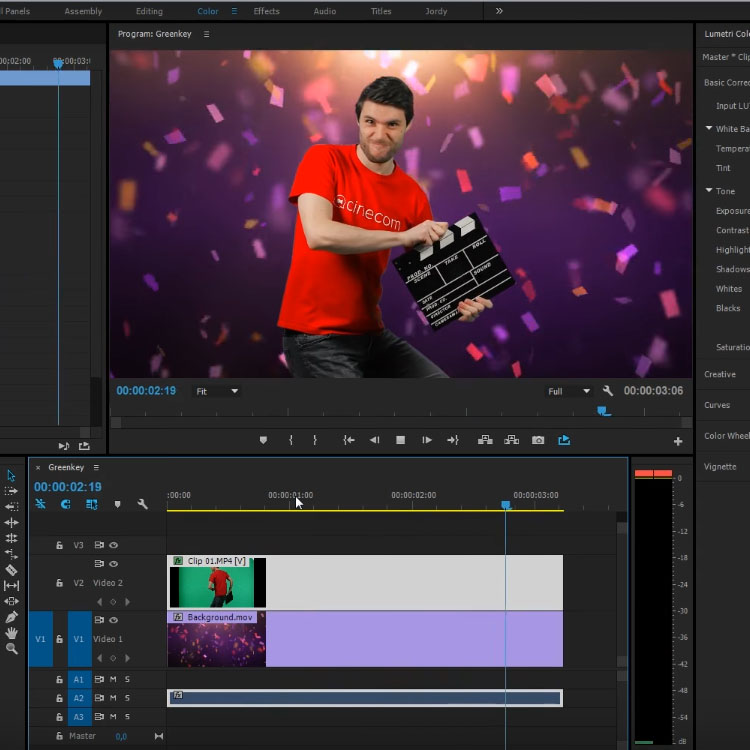
Using green-screen effects have become vital across all levels of the industry. With modern editing software, these methods have become simpler, easier to control, and more impressive in their results.Īs the technology evolved, the ambition of filmmakers has also increased. The result, while basic, allowed photographers to experiment with background replacement all from within the camera. For example, taking a photo of a subject in front of a black color matte then, using the same film, then taking a photo of a background. The original method involved photographers double exposing their film reels. Since you have already established a key on your top clip, the background will appear below the subject.Using Green Screens in Film: A Brief Historyįilmmakers have practiced green screening in its current form since the 1930s, but like most filmmaking techniques, it has earlier roots in photography. Then, drop in your background clip under the keyed clip. To add a backdrop, simply import what you’d like to place behind your subject, then move your keyed clip up to the second video layer (V2) on your timeline.

Set your output view back to Composite so you can see how your video is looking, and place a backdrop behind your subject for a better visual reference.

With these two tweaks, the image is looking pretty good, but we’re not quite done, yet. If you’re keying a person, adding shadow will make the subject appear more natural compared to a very hard key.

Bumping up the Shadow parameter will add softness to the edge of your matte - or a “shadow” of the edge. It cleans up the background and makes it completely black in this alpha view. Moving the Pedestal slider up will completely remove your green screen from the clip. Next, to clean up the background (in black) adjust the Pedestal slider.


 0 kommentar(er)
0 kommentar(er)
